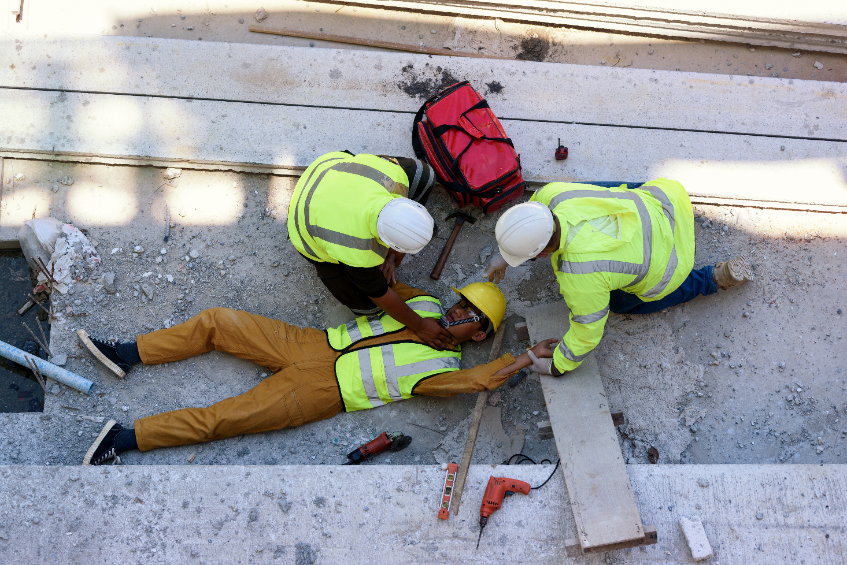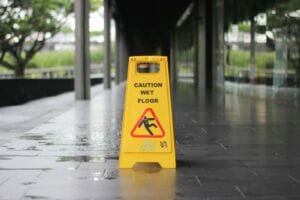A construction site is a portrait of controlled chaos, a space of constant transformation where progress is measured daily. Amid the noise and activity, a simple puddle of water, a stray power cord, or a patch of loose gravel can seem trivial, yet these seemingly minor slip and trip hazards represent one of the most persistent dangers in the industry. Understanding the legal consequences of such an incident requires looking beyond the immediate event, as a single misstep can connect back to a dense network of legal duties and regulations. When an injury occurs, a white plains slip and fall lawyer often begins by untangling this web of responsibility, which is woven from federal, state, and local mandates. These frameworks are not merely suggestions; they are legally enforceable standards designed to impose order on a hazardous environment. They establish clear obligations for safety, define liability when those obligations are not met, and create pathways for accountability. This legal architecture serves as the unseen scaffolding that supports a culture of prevention, ensuring the well-being of every person who steps onto the site by transforming abstract safety goals into concrete, enforceable duties for all parties involved in a project.
The Foundation of Safety: OSHA’s Role
At the federal level, the Occupational Safety and Health Administration (OSHA) provides the foundational legal framework for worksite safety across the United States. OSHA’s authority is both broad and specific, compelling employers to actively manage and mitigate workplace dangers. The cornerstone of this authority is the General Duty Clause, Section 5(a)(1) of the OSH Act, which mandates that employers provide a place of employment that is “free from recognized hazards that are causing or are likely to cause death or serious physical harm.” This clause acts as a crucial catch-all for dangers not covered by a specific standard. For slip hazards, however, OSHA provides more direct guidance through its regulations for walking-working surfaces, found in 29 CFR 1910.22.
These rules explicitly require employers to:
- Maintain all walking-working surfaces in a clean, orderly, and sanitary condition.
- Keep workroom floors as clean and dry as conditions permit.
- Ensure that any spills or potential hazards are cleaned up immediately.
- Keep passageways clear of obstructions that could create a tripping hazard.
- Provide safe means of access and egress from all work areas.
By enforcing these standards, OSHA ensures that employers have a direct legal obligation to manage spills, clear pathways, and maintain floors in a condition that prevents a worker from stumbling or losing their footing on the job.
MORE NEWS: 10 best resorts in Arizona for 2025, according to Travel + Leisure
Beyond the Federal Mandate: State Labor Laws and Building Codes
While OSHA sets a national minimum standard for safety, many states have enacted their laws that provide even more robust protections for workers, creating an additional and often stricter layer of legal responsibility. New York is a prime example, with specific statutes that directly address slip and trip hazards.
| State-Level Protection | Explanation and Significance |
| New York Labor Law § 241(6) | Imposes a non-delegable duty on owners and general contractors to ensure the safety of a construction site. This means they cannot pass legal responsibility for safety failures to subcontractors. |
| Industrial Code Rule 23 | Provides the specific, concrete safety rules that owners and contractors must follow under § 241(6). This includes explicit regulations against tripping hazards (debris, tools) and slipping hazards (ice, water, grease). |
This duty, established by Labor Law § 241(6), is significant because it cannot be passed off to a subcontractor. The law’s power is amplified by its reference to the New York State Industrial Code. Specifically, Industrial Code Rule 23 contains numerous detailed provisions aimed at preventing slip and trip incidents, such as regulations against accumulations of dirt, debris, scattered tools, and other tripping hazards, as well as requirements for protecting workers from slipping on ice, snow, water, or grease. These state-level mandates create specific, actionable safety rules that are essential to site management.
The Web of Responsibility: Identifying Liable Parties
On a bustling construction site with numerous employers, identifying the party responsible for a slip hazard is rarely straightforward. Liability is not automatic; it hinges on which entity had the authority and opportunity to prevent the danger. The property owner has a baseline duty to ensure the premises are reasonably safe, but this responsibility is often shared. The general contractor (GC) assumes a broader role, overseeing site-wide safety coordination and holding the ultimate power to enforce safety rules among all trades. Below the GC, various subcontractors are responsible for the hazards they create or control within their specific work areas—a plumber leaving a wet floor or an electrician leaving loose wiring. The central legal question becomes one of control. Proving which entity had supervision over the specific condition that caused the injury is paramount. This intricate analysis often requires a detailed investigation, which is where seeking professional guidance becomes critical. An experienced construction accident attorney White Plains is equipped to navigate these complexities, working to pinpoint the negligent party and build a case based on violations of established safety duties.
Legal Recourse: Workers’ Compensation and Third-Party Claims
When a worker is injured by a slip hazard, their legal avenues for compensation are primarily dictated by their relationship to the at-fault party. The first line of recourse is typically the workers’ compensation system. This is a no-fault insurance benefit provided by the direct employer, designed to cover medical bills and a portion of lost wages swiftly, regardless of who was to blame for the accident. In exchange for these benefits, the employee is generally prohibited from filing a personal injury lawsuit against their employer. However, this restriction does not extend to other entities on the site. If the hazard was created by a negligent third party—such as a different subcontractor, the general contractor, or the property owner—the injured worker retains the right to file a separate personal injury claim against that party. This third-party lawsuit allows the worker to seek damages not covered by workers’ compensation, including pain and suffering. This dual-path system recognizes the complex, multi-employer nature of construction work and provides a mechanism for holding all responsible parties accountable. This dual-path system provides the injured worker with two main legal recourses:
- Workers’ Compensation Claim: This is a no-fault claim filed against the worker’s direct employer. It covers medical expenses and partial wage replacement but prohibits the worker from suing the employer for the injury.
- Third-Party Personal Injury Lawsuit: This is a separate lawsuit filed against a negligent party other than the direct employer (e.g., a general contractor, property owner, or another subcontractor). This claim allows the worker to seek full compensation for damages, including pain and suffering, which are not available through workers’ compensation.
Conclusion
Ultimately, the legal frameworks governing slip hazards on construction sites form an essential, protective architecture. They are not merely punitive regulations but are proactive structures intended to build a deeply ingrained culture of safety and prevention. From the broad federal mandates of OSHA to the specific, actionable rules embedded in state labor laws and building codes, each layer works in concert to define and enforce a shared responsibility for worker well-being. This system acknowledges that true safety is not the result of one entity’s efforts but the collective commitment of property owners, general contractors, and every subcontractor on site.




